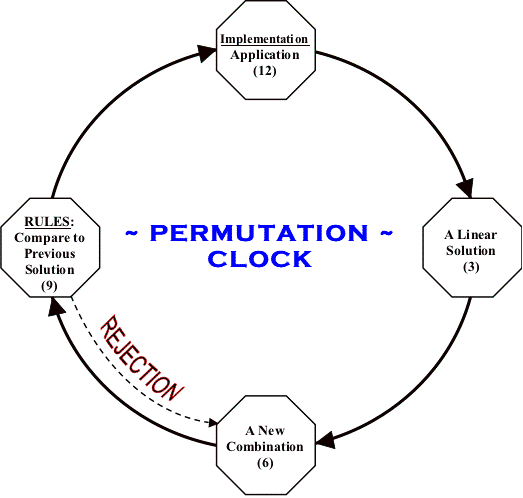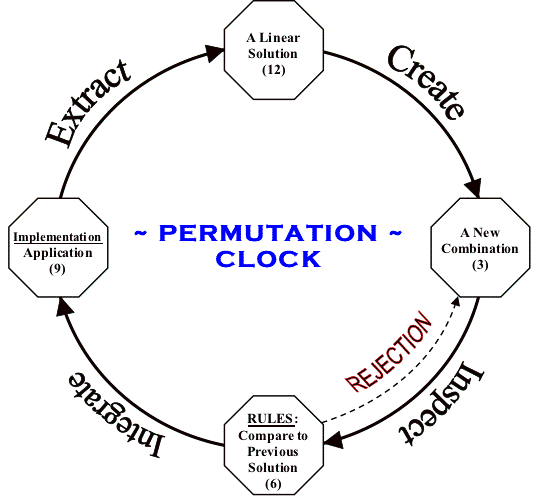{menu}
The Permutation Clock
By Phillip Paul Fuchs
Perpetual Improvements: Everyday programmers are challenged to create very efficient algorithms that follow a concise mathematical model.
The end-result is often a well-planned computer application focused upon a specific solution.
Application upgrades often stem from user demands directly fed-back to the programmers.
In this respect, idle time within any application is virtually left unchallenged by most programmers.
The difficult problems that we face today can not be left unchallenged by static applications.
The Permutation Clock illustrated below automates perpetual improvements during idle periods within any computer application.
By extracting a concise linear solution from the application, a new combination can be created then inspected.
Upon rejection another combination is created, otherwise the new order (or new combination) is integrated into the current application and the process is repeated.
Presented below are two Permutation Clock Models for your review:


{top}
Copyright © 2010 by Phillip Paul Fuchs, all rights reserved.
Abstracting with credit is permitted...



